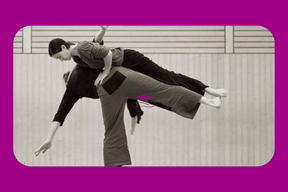Exercises for Fascia Health
We now know that our relationship with our body and movement is not just reliant on muscles and the nervous system. It is deeply connected to the fascia, which wraps around us like a network. In a previous article, I discussed how fascia is just one type of connective tissue, making it somewhat limiting to refer to it as simply “connective tissue” in Turkish. So, while every fascia is a connective tissue, not every connective tissue is fascia. 🙂 What we need to do for overall health tends to overlap across all tissues, but in this article, we’ll focus specifically on fascia and what is needed to maintain its health.
When we think of restricted movement or chronic pain, we often assume the cause is our muscles or nervous system, and to an extent, that’s true. The nervous system relays information throughout the body, signaling to the brain, “I’m too tight; stop now.” We adjust the intensity of our stretches accordingly. These are intelligent, self-protective mechanisms built into the body. The flow of information within the body is incredibly important—there must be no interruptions in the transmission of signals.
But it’s not just individual parts of the body that limit our movement. The body’s connective integrity—its wholeness—determines whether we can comfortably enter certain positions or experience too much tension in others, limiting our progress.
Similarly, restrictions or tightness within the fascia can lead to stiffness and chronic pain. That’s why, rather than resorting to medication or staying inactive all day, relieving tension through massage or movement is often more effective.
We know that chronic pain has become almost unavoidable in today’s world. We sit far more than we should, and our bodies bear the cost of prolonged sitting in many ways. An exercise that feels like “enough” in today’s sedentary context may only be fulfilling about 30% of what our body actually needs. Consider how few of us now hunt, gather fruit, or even make trips to the store—this reduced physical demand on our bodies has led to predictable consequences. If you don’t climb stairs, if you mostly stay home, and if you rarely engage with your environment, that percentage drops even further.
There are specific actions we can take to maintain fascia health, and when we practice them regularly, we notice a significant improvement in our overall quality of life. Let’s look at a few key approaches:
1. Stretching Regularly:
Regular stretching can enhance the elasticity of fascia and improve your range of motion. Scientific studies suggest that stretching at least five days a week for at least five minutes a day leads to progress. While I don’t usually advocate for limiting ourselves with numbers or rigid expectations, the benefits of maintaining a consistent practice speak for themselves.
It’s important to remember that stretching isn’t limited to one method. There are many ways to stretch (I’ll cover this in another article).
2. Whole-Body Exercises:
Engage in exercises that approach the body as a whole system. Practices like dance, tai chi, yoga, or animal flow are excellent choices because their philosophies already support this wholeness. When we aim to cultivate connectivity and integration within the fascia, we can’t overlook the importance of working with our body weight and focusing on the transitions between movements. Instead of performing isolated poses, exercises that allow us to experience how one movement flows into the next in detail are exceptional for fascia health.
Additionally, you might choose to integrate the emotional and mental layers into this practice, deepening the experience.
3. Shaking Exercises:
Fascia responds exceptionally well to shaking or vibrating movements, which can release tension more effectively than conscious control. Whether incorporated into dance or performed solo for a few minutes each day, shaking exercises provide clear benefits for both body and mind.
4. Massage or Fascia Rollers:
Gentle hands that knead the body like dough, or the use of fascia rollers, can work wonders for fascia health. Massage increases body awareness and supports our ability to feel and sense the body. Here, a systemic massage technique—one that treats the whole body rather than focusing on isolated areas—will be most effective. Methods like Rolfing or Yumeiho work with the entire body from foot to head. If professional massage isn’t an option, self-massage with a fascia roller can rejuvenate and relieve tension in your tissues.
5. Slow, Continuous Movements:
I often tell my students that slowness reveals all imperfections. When we move slowly, it becomes easier to notice where in our movement spectrum we get stuck and where we struggle to maintain continuity. The areas where we lose fluidity are exactly where we need to pay special attention, supporting the fascia in those regions. By patiently moving through those areas with slow, continuous motion, we can create space for the tissue to rebalance itself. Tai chi is an excellent example of this approach. In walking meditation, too, we become more aware of blockages in our fascia more quickly.
6. Cardio and Balance Exercises:
Exercises like running and skipping rope enhance circulation, nourishing fascia tissues. Balance exercises, meanwhile, encourage the entire body to work collaboratively, integrating all tissues into a harmonious whole.
Finally, I’d like to mention partner dance. In partner dance, movement is no longer entirely under our own control; instead, we respond reflexively and spontaneously to the motion of another. In doing so, we are invited to explore movements and positions we might never attempt on our own. The fascia, too, will engage in new ways, guided by the need to maintain connection with the other person, rediscovering its wholeness and vitality through this shared experience.


